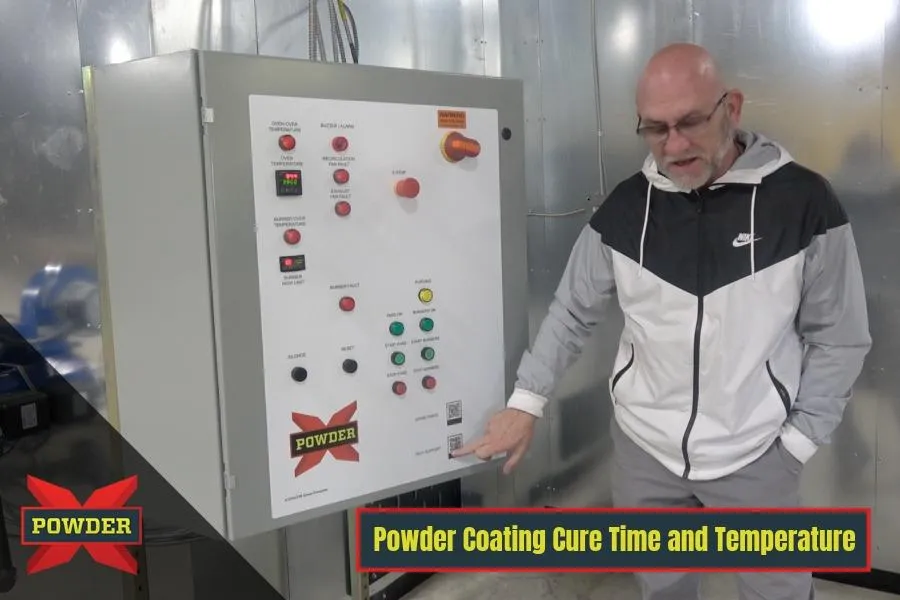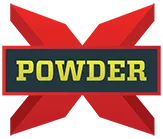
Powder Coating Cure Time and Temperature: How to Get It Right Every Time
You’ve sprayed your part, it looks perfect, and it’s time to hit the oven. When it comes to powder coating, understanding the cure time and temperature is crucial for achieving quality results.
But here’s the question that separates the rookies from the pros:
“How long should I cure powder coating and at what temperature?” This question gets to the heart of understanding powder coating cure time and temperature requirements.
If you think the answer is always “10 minutes at 400°F,” you’re gambling with every part you run. And in powder coating, guesswork costs time, money, and reputation.
Let’s walk through the science behind cure time and temperature and how to dial in the process for repeatable, high-quality results.
Cure Time Starts When the Part Reaches Temperature (Not When It Enters the Oven)
Here’s a common mistake: putting a part into a 400°F oven, setting a 10-minute timer, and calling it done.
Wrong.
The “10 minutes at 400°F” you see on your powder’s technical data sheet (TDS) means 10 minutes after the substrate itself reaches 400°F, not when you close the oven door. The real powder coating cure time and temperature are critical to this process.
If your part is thick, heavy, or large, it could take 5–15 minutes just to reach that target temp. That means your actual time in the oven might be 20 minutes or more.
Pro Tip: Use a contact thermocouple (not an infrared gun) to monitor part temperature. IR readings can be wildly inaccurate on curved, shiny, or dark-colored surfaces.
What Happens During Curing?
Curing is the chemical reaction where the powder flows, gels, and crosslinks into a durable film. If you undercure:
The film remains soft or brittle
Adhesion suffers
Durability tanks
The part fails quality inspection or customer use
If you overcure, most powders are forgiving, up to a point. Many modern powders tolerate 50–100% overbake without major issues, though gloss or color may shift slightly.
Bottom line: Undercuring is always riskier than overcuring, and mastering powder coating cure time and temperature is essential to avoid these risks.
Common Cure Schedules by Powder Type
Always check the TDS from your powder supplier. Every formulation has its own specific cure window. Knowing its cure time and temperature for powder coating is key to success.
Don’t Guess, Build a Cure Profile
If you coat parts of varying thickness, you need to map their heat-up time:
Attach a thermocouple to the heaviest section of the part.
Place in the oven and start recording.
Note the time it takes to reach your target cure temp.
Add your dwell time from that point forward.
Doing this for each type of part you run lets you build a repeatable cure profile. It’s one of the most important steps to eliminate rework and coating failures, especially if you’re mindful of powder coating cure time and temperature.
Why Oven Type Matters
Not all ovens are created equal:
Convection ovens (standard gas or electric) are most common. Great for even, reliable heat.
Infrared ovens cure faster but can create uneven results on complex shapes.
Batch ovens vary in recovery time and insulation efficiency.
Make sure your oven is properly balanced for airflow and pressure. Poor oven calibration = inconsistent cure, even with good technique when managing powder coating temperature and cure time.
Cure Testing: How to Know It’s Done
Want a quick test? Try the MEK rub or bend test on a sample panel:
If the coating scratches off or cracks easily, it’s undercured.
If it resists abrasion and flexes without damage, you’re good.
Better yet? Invest in a cure test kit or data-logging thermocouple probe to verify performance on real jobs. These are useful tools to ensure proper powder coating cure time and temperature.
Common Cure Mistakes to Avoid
Starting the timer too early
Relying on air temp instead of part temp
Ignoring oven hot/cold zones
Skipping test panels
Not verifying cure on thick/heavy parts
Fix these, and you’ll solve 90% of post-cure problems, particularly those related to cure time and temperature inconsistencies in powder coating.
Final Word
Curing isn’t just heat, it’s precision.
When you master cure time and temperature, you move from “good enough” to truly pro-level powder coating. Whether you’re running a hobby setup or scaling production, dialing in your cure process protects your reputation, your coatings, and your bottom line.
